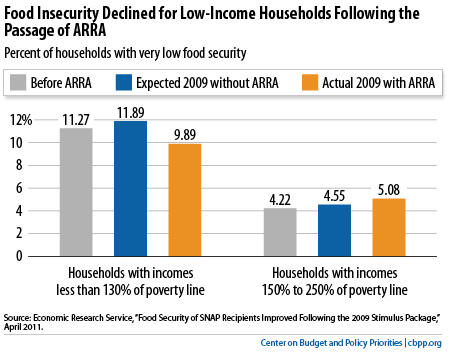BEYOND THE NUMBERS
The Supplemental Nutrition Assistance Program (SNAP, formerly the Food Stamp Program) does an admirable job of meeting its core purpose — to provide a basic nutrition benefit to low-income Americans — as our new fact sheet points out. The program has largely eliminated severe hunger and malnutrition in the United States and, during the most recent recession, it responded quickly and efficiently to support low-income families.
SNAP’s success as a child nutrition program is less well known. This program has a tremendous impact on children’s health. Currently, SNAP benefits help the families of close to 1 in 3 children nationwide put food on the table.
For many families, receiving SNAP means they can afford to feed their children healthy meals, which is critical to children’s well being. This helps protect children from diets that lack necessary nutrients, which can stunt their growth and development, and children in families that receive SNAP are less likely to develop developmental problems caused by hunger than their counterparts in eligible households that don’t receive SNAP.
Moreover, SNAP is an effective antipoverty program for children: SNAP benefits kept about 2 million children out of poverty, and 1.3 million out of deep poverty (or above 50 percent of the poverty line), in 2010. Even more striking, SNAP cut the number of children in extreme poverty (households earning less than $2 per person per day) in 2011 by half — from 2.8 million to 1.4 million (see chart).

